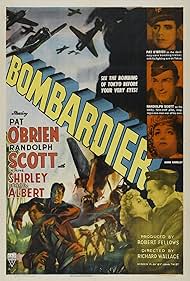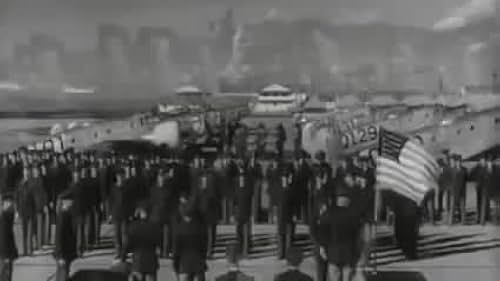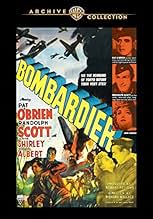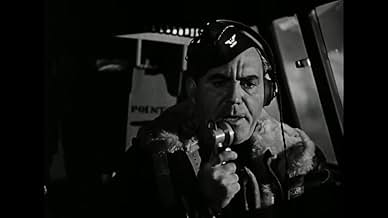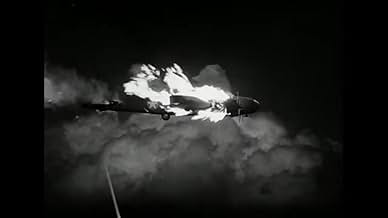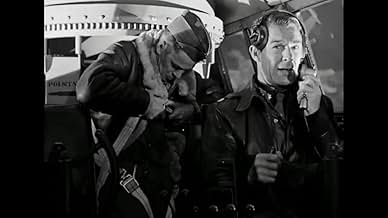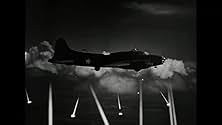Añade un argumento en tu idiomaMajor "Chick" Davis is convinced that high-level bombing will win the next war. He convinces the powers-that-be to set up a bombardier school. He efficiently sets about training the USAAF's ... Leer todoMajor "Chick" Davis is convinced that high-level bombing will win the next war. He convinces the powers-that-be to set up a bombardier school. He efficiently sets about training the USAAF's first generation of high-level bombardiers.Major "Chick" Davis is convinced that high-level bombing will win the next war. He convinces the powers-that-be to set up a bombardier school. He efficiently sets about training the USAAF's first generation of high-level bombardiers.
- Dirección
- Guión
- Reparto principal
- Nominado para 1 premio Óscar
- 1 premio y 1 nominación en total
- General Eubank
- (as Brigadier-General Eugene L. Eubank)
- Little Boy - Spy
- (sin acreditar)
- Congressman
- (sin acreditar)
- Buck's Secretary
- (sin acreditar)
- Soldier
- (sin acreditar)
Reseñas destacadas
O'Brien is more interested in technology. Develop and learn how to use an accurate bombsight so you can be up around 20,000 feet and only have to worry about enemy planes which presumably your fighter escort has to deal with.
But since these guys are friends it's a good natured fight as both are in the business of training bombardiers. Among the familiar faces they train are Eddie Albert and Robert Ryan before both went in the service themselves.
Bombardier is so very dated now, but still entertaining. The advances in technology are light years beyond what O'Brien and Scott are dealing with. Film buffs who are air historians might like it though.
There is no way that the bombers are that accurate. Those bullseye targets are impossible until laser-guided bombs. In fact, something as big as a tank would be hard to hit by any plane of that era. Of course, this is wartime propaganda and it serves its purpose. There is some miniature work along with the use of the real bombers. For its time, some of it actually looks good. The story is done in a straight, patriotic, and old fashion melodramatic way. There are a couple of familiar faces. It gets rather intense when some of them get captured which culminates in a bombastic patriotic flourish.
Admittedly the dramatic plot was somewhat predictable. But you had a sense that there would be some interesting scenes as the movie went on. We were able to witness what appeared to be realistic training regimens and equipment.
Where this movie came together for me was closer to the end. The scenes had a realism (at least as I perceived it) that I haven't encountered often before. You could place yourself in the action and imagine the thoughts of the young combatants. This was mixed in with the usual problems of portraying passable Japanese soldiers at a time when you might think real Japanese actors would be somewhat scarce.
The movie is excellent as a source of the state of the American mindset in 1943 as the war waged with Japan. Also of interest was a dig at the Japanese with respect to the help the USA gave Japan in past years.
¿Sabías que...?
- CuriosidadesThe American bomb sight mentioned throughout the movie was the Norden bomb sight whose secret was almost as closely guarded as the development of the atomic bomb. It used a mechanical computer and linkage to the plane's autopilot to achieve an accuracy of hitting with 75 feet of the target from an altitude of 12000 feet. All members of the bomber's crew were ordered to destroy the sight at all costs if the plane was going to crash. Many ships carried a hand grenade to place under the sight to assure total destruction. It was used as late as 1967 to drop sensors along the Ho Chi Minh trail in Viet Nam.
- PifiasThe Douglas B18's, Beechcraft AT11's and B17 aircraft all sport national markings found from May 1942 until June 1943, yet a considerable part of this film takes place before Pearl Harbor.
- Citas
Burton Hughes: You're quite an entomologist.
Sgt. Archie Dixon: Nope! But I know all about bugs.
- Créditos adicionalesBrigadier General Eugene L. Eubank is billed first because he is credited in the forward before any cast is mentioned, and he is not listed in the comprehensive end credits.
- Versiones alternativasAlso available in a computer colorized version.
- ConexionesReferences Adiós, Mr. Chips (1939)
- Banda sonoraSong of the Bombardiers
(1942) (published title)
On-screen title: "Song of the U. S. Bombardiers"
Music by M.K. Jerome (as M. K. Jerome)
Lyrics by Jack Scholl
Played during the opening and closing credits and often in the score
Sung by the audience at the magic show
Selecciones populares
Detalles
- Duración1 hora 39 minutos
- Color
- Relación de aspecto
- 1.37 : 1
Contribuir a esta página

